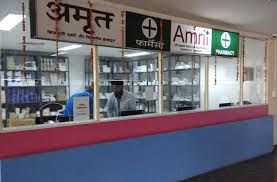
The 15th Finance commission has held a detailed meeting with representatives of the World Bank, Niti Aayog and member of the Commission’s High level group (HLG) on the health sector for a better understanding of the contours of India’s Health Sector and in view of the Union Government’s need and intention for reprioritization of its health spending.
Daily Current Affairs Quiz 2020
Highlights of the Meeting
There is scope for service delivery reforms by using innovation, leveraging technology, institutional strengthening, coordination and empowering of States.
The adverse economic impact is likely to be proportionally larger than the direct impact of the coronavirus on morbidity and mortality. For example, as per projections done by IMF, per capita GDP is projected to decline by 6% which is one of the largest contractions the country has ever seen.
Quality of care has emerged as a key issue in India’s health system. Also, there is huge variability across states and care providers.
To ensure better quality of spending, there is a need for PFM reforms to improve budget execution, resource allocation formulas from states to districts should better reflect population need (mortality/morbidity/equity) rather than historical norms, reduce fragmentation of health protection schemes and a gradual shift to demand-side financing modalities.
There is also a need for renewed focus on equity and need. For example NHM should be related to per capita spending on health, similarly, spending per beneficiary must increase in poorer States. Needs-based transfer formulas for health should be carefully designed. Also, a separate health equalization pot is needed. Explicit accountability frameworks including target results need to be explored.
Greater attention to resource allocation is required within States. Service delivery should rely on a robust public/private mix.
Government of India can be an enabler of ‘open source’ approach to promote service delivery reforms. For example, financing via centrally-sponsored schemes that allows flexibility in implementation and course-correction, setting accountability mechanisms with states linked to central schemes and promoting knowledge transfer platforms may be used.
Service delivery innovations need to be encouraged like introducing technology solutions, primary health care centers in urban areas may be run by contracted private providers, public-private partnerships may be encouraged in areas of digital technology, data science, bottom of pyramid models; and multi-sector actions and community mobilization.
Core public health functions need to be strengthened. Production of global public goods like new vaccines, medicines and diagnostics to be enhanced. Use of private sector engagement for TB diagnosis and treatment, performance-based incentives to states and districts through TB Performance Index may be taken up.
Strengthening of surveillance and district level capacity should be done to identify and respond to future epidemics. The following measures may be taken:
Roll-out targeted investments to enhance integrated public health laboratory infrastructure and functions in states where capacities are weak.
Develop and deploy district surveillance teams with core competencies in integrated disease surveillance across different states and at the central level to enhance analytical capacity for early and appropriate response (Epidemic Intelligence Service).
Develop and roll-out real time surveillance & reporting system for Human and Animal Health Surveillance as most future outbreaks will be Zoonotic.
Strengthen national and state institutions to effectively prepare for pandemics (NCDC) and develop ICMR as a global center for excellence in medical research.





